
Both an art form and a historical document, posters have long fascinated collectors, artists, and art lovers all over the world. Nowadays you can see posters almost everywhere: pubs, malls, on the street, small shops, people’s homes, college students’ rooms, etc. Posters are made to advertise various things: a beverage, a movie, a song, a singer, etc. Having a poster or a picture of a band, an artist, a sportsman or a movie star means that you admire the person/persons present in that poster. In the old days, having posters of the band or artist that you liked most was a dream difficult to accomplish. These days you can buy posters with singers and bands from all music stores, and more conveniently from the internet.
50 cent, Britney Spears, Eminem, U2, Lenny Kravitz, Mickey Mouse, Shrek, the latest blockbuster movies, and even Sponge Bob’s images and photos have been captured in posters. Individuals of all ages – adults, teenagers and kids – commonly hang posters of their favorite band, singer, painter, actor, actress, and cartoon character in their rooms or special places in their homes and offices. Through time, posters have definitely become an important element of our daily lives, everywhere in the world.
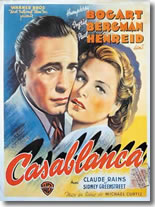
However, when we look at the posters today, it is hard to imagine all the different roles thay had since their birth. From a new expression medium, to a form of art, propaganda, and advertising, the history of posters is totally fascinating as it tells us how a simple piece of paper with images and words was used through time to express the particular needs of different historic moments.
Let us walk you through this amazing journey into the history of the posters. And yes, expect to learn a lot and be frequently surprised as you read on! Through this website we would like to expose poster-lovers and prospective poster-lovers to the marvels of poster art, one of the most important art forms of the twentieth century, and an growing passion among audiences worldwide.
The Birth of Posters: From Town Criers to Billboards
The history related to posters begins way back in the 15th century, when European artisans used to handmade every single sheet. Despite lithography was invented in 1798, it was then too slow and expensive to be used for poster production. The result was that most posters at that time were woodblocks or metal engravings, with very little color or design.
Although producing posters was a painstaking and long process, it opened the way to a new and exciting age of spreading announcements, news and other information to people passing by on the streets. Before 1500, information and news were distributed to people via ‘town criers’, that is, individuals that would walk the streets and stop at the main crossroads, proclaiming the orders and announcements from the Church, the King, or thepower to be in the local brotherhood. Every town and village had their own town criers, who were literally the ‘carriers of news’, as they announced every important event in town, from good news, to burials, convocations, and lost objects. It was in 1539, under Francois I, that the posters started to slowly but gradually substitute the town criers. In this year, official edicts stopped being announced by the town criers in public but rather, they started to appear posted in billboards. Before 1600, billboards were already identified as the predominant means of public expression, with poster illustrations taking a key role.
One of the first important poster designers of this time was Jean-Michel Papillon, a French engraver whose signature was well-known and who is also considered to be the inventor of wallpaper. Papillon started making block designs in matching, continuous patterns as early as 1675. Following Papillon’s steps, in 1628 another French called Theophraste Renaudot created and implemented in his business his ‘Bureau d’adresses’. A visionary Protestant physician, Renaudot, started listing small but targeted advertisements indexing the list of suppliers and buyers of a variety of products. Driven by many years of this successful practice, in 1633 he printed long loose sleeves listing this information under a new name of ‘Sheets of the Bureau d’adresses’, which represented the initial stage of the advertising poster, as we know it today.

The role of the posters in the late 1800: the Dominant Means of Mass Communication
The French revolution of 1789 caused a virtual and rapid explosion and a subsequent bloom in all fields of communications. As the French started to experience the freedom in the media, the newspapers slowly began to display printed advertisements. All existing forms of communications, from speeches to newspapers, lampoons and poster design enjoyed a formidable development. With the Industrial Revolution of the 19th century, which allowed technological advances in mechanization and production organization, a new era in publishing began. Some of the greatest and successful illustrators of this period were Grandville, Gilded, Raffet, Gavarni, and Johannot. However, something had to change for the posters to become as popular as they are today, and Jules Cheret – later known as the ‘father of modern poster’ – was the one that made it possible.
Like most of the printed media, graphic visual arts depended on the discovery of the printing press, which allowed for the implementation and mass production of posters in all sizes and shapes. Lithography – the method that is used for poster printing – allows printing by putting ink on a series of stone or metal carvings which work as reliefs of poster’s color regions. Lithography had been invented in 1798 by a Czech Alois Senefelder in Austria. By 1848 the method had been refined and improved to the degree that it was possible to produce 10,000 or more sheers per hour. Jules Cheret, however, was the first artist and manufacturer to produce posters in large numbers through lithography. A simple artisan who had not received any formal artistic education, Cheret was another visionary who perceived the changing needs of the times better than others and in 1866 he opened his own printing shop in Paris.
The same print shop that would change the history of posters, in particular, and of art, in general, forever. 1867 ws the year Cheret’s printing method produced the first poster, which showed Sarah Bernardt as Princess Desiree in the comedy for Bal Valentino, ‘La Biche au Bois’, giving birth to the artistic type of commercial posters. What Cheret did was to improve the existing printing techniques by creating the ‘three stone lithographic process’, a process that allowed to achieve literally any rainbow color with just three stones – blue, red, and yellow – carefully printed. Even though the process was not easy, the result was an extraordinary intensity of texture and color , combining words and images in attractive and at the same time, economical format, making lithography posters a remarkable innovation.
Jules Cheret not only made rapid color printing in volume possible but also, he played a key role in the transformation of the aesthetic nature of the posters, giving them an identity as well as autonomy from other fields of pictorial art. As a result of all this, after 1870s the posters became the important means of communication in the rapidly growing cities of America and Europe. At the same time some printers became aware of the enormous potential and good prospects for poster advertising and tried to innovate. Probably the first innovator was a French paper manufacturer called Jean-Alexis Rouchon, who applied for two patents in 1844 and 1851 concerning ‘the use of printing on wallpaper for the colour printing of posters’. By 1895, Cheret’s posters had become so popular and in demand that they were stolen from the city walls almost as fast as they were hung! Over time, Jules Cheret inspired and influenced such talented graphic artists and poster designers as Pierre Bonnard, Edouard Manet, Henri de Toulouse-Lautrec, Maxfield Parrish, and Leonetto Cappiello.
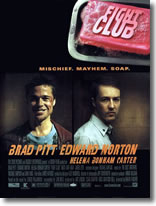 The Poster Craze: The Beginning of Advertising Age
The Poster Craze: The Beginning of Advertising Age
The posters were on the rise as the streets of Berlin, Paris and Milan were rapidly changed into the art gallery, setting up the stage for the age of modern advertising. In 1881, the government passed the law which created official ‘posting places’. With this law, a whole new industry was immediately created since each and every poster had to have a tax stamp to specify that a certain fee had been paid in the local office for the right to post it. Based the poster size on square footage, the tax was soon led to the adoption of standard sizes for the prints. As a result, advertisers started working with printers, artists, and posting companies to make, post and maintain the posters on the street. In the 1890s, known in France as the Belle Epoque, a crazefor posters came into bloom. With ‘Moulin Rouge’, Toulouse-Lautrec’s first poster in 1891, the posters became fine art. The French, known for their great sensitivity to art and their refined taste in decoration, started to purchase posters of renowned artists and display them in their favorite places. Believe it or not, in the early 1890s, the sucessful poster dealer Sagot in Paris listed over 2,000 different posters in his store catalog. Following this trend, poster exhibitions, poster magazines and poster dealers proliferated everywhere in Europe.
In 1894, the first Art Noveau posters design appeared. This new poster style originated literally overnight, when its creator, Alphonse Mucha – a Czech artist working in Paris – was pressed to create posters for the city’s new celebrity, actress Sarah Bernhardt. Featuring many different artistic influences such as Byzantine Art, the Arts and Crafts Movement and the Pre-Raphaelites, the Art Noveau poster style dominated the Parisian poster scene for the next 10 years and became the important multi-national decorative and visual art movement until WW I.
The Posters Outside France: Embraced or Not?
France is and has long been one of the most important centers for the arts and any other form of graphic design in the world. This was true even when the Belle Epoque was in the top of its bloom. Although the other European countries were not as trendy or avant-gardist as France, the posters were gradually embraced by most of the other European countries since the 1880s, and definitely quickened during movement of the Belle Epoque.
In every particular country, the posters were the means to highlight and support the society’s unique cultural institutions. In France, they reflected the cult of the cafe. In Spain, the posters emphasized the bullfight and the festivals. In Italy, they displayed people’s preference for the fashion and the opera. In Holland, the posters depicted literature and products for the home. In Germany, they stressed trade fairs and magazines. In Great Britain and the United States, the posters were extensively used by literary journals and the circus. But not all were isolated manifestations of poster art. The first shows dispalying posters were hosted in Italy and Great Britain in 1894, German show in 1896, and Russian poster show in 1897. Probably the most important show ever was in 1896 in Reims, France and featured a total of 1,690 different posters on a wide array of topics, arranged by place of origine and country.
Despite the profound and powerful influence of France on poster art, as the Belle Epoque evolved and progressed, distinctive national poster styles became more prominent. For example, Dutch posters evidenced restraint and orderliness, Italian posters reflected grand scale and drama, and German posters became known for their medievalism and directness.

The New Century: Cappiello’s Distinctive Poster Art
While Art Nouveau’s influence extended to the new century, it had lost a lot of its original dynamism through careless repetition and imitation . The Toulouse-Lautrec’s death in 1901 coupled with the abandonment of art posters by top artists Cheret and Mucha – who both switched to painting – had left an empty space in the poster scene. This space was filled in 1898 by an Italian caricaturist working in Paris Leonetto Cappiello, who had been influenced by poster predecessors Toulouse-Lautrec and Cheret. Leaving aside the fussy and complicated detail of Art Nouveau posters, Cappiello decided to focus on one simple and straight-forward image – quite often bizarre or humorous – that would automatically grab the viewer’s attention on the street. Known by many as the ‘father of modern advertising’, Cappiello became especially famous in 1906 with his absinthe poster of ‘Maurin Quina’ , which featured a mischievous little green devil on a simple black background with block lettering. This poster signalled the maturation of a visual style ready to dominate French poster art until Cassandre’s initial Art Deco posters in 1923. At the same time, other artists from Austria’s Vienna Secession, Scotland’s Glasgow School, and Deutscher Werkbund in Germany were also transforming Art Nouveau original modernist spirit. None of these design schools accepted Art Nouveau’s typical curvilinear ornamentation.
Instead, they preferred a geometric and rectilinear structures originated and based on functionalism. One of the most important outcomes of these transformation efforts and inspirations was Poster Style, or the German ‘Plakatstil’, originated in 1905 in Berlin by local artist Lucien Bernhard. The Poster Style was originated at a competition for a matches company, when Bernhard drew two big matches and wrote the brand trade name on top of them in bold clear letters. His design of posters was so strikingly simple and straight-to-the-point that it won Lucien the competition and led the way towards a modern and abstract visual language. Another important European art movement called Cubism is credited with the massification of the posters. Based on the main concept that the essence of any object can only be captured by displaying it from several points of view at the same time, Cubism was developed from 1908 through 1912 in a collaboration between Spanish artist Pablo Picasso and French artist Georges Braque.
Although this revolutionary art movement – which stemmed from French painter Paul Cezanne – was not long-lived or widespread, it boosted an enormous creative explosion throughout the world that echoed through all of 20 th century art. Among the many art movements directly or indirectly influenced by Cubism were Constructivism, Orphism, Futurism, Precisionism, Purism, and to certain degree, Expressionism. Picasso, Cubism’s most renowned artist, made his works available in poster form, leading the posters back to their original uses as art.
The Bolshevik Revolution, World War I and a fresh role for propaganda with posters
As the world went into war, a new and fresh role for the posters emerged: propaganda. In fact, the war put in place the biggest advertising effort and campaign to the present date aimed at serving all types of wartime needs, from recruiting new soldiers, raising money, and boosting humane volunteer efforts, to encouraging production for military and provoking indignation at enemy efforts and atrocities.
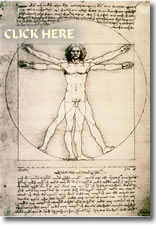
As a logical consequence, the United States alone created over 2,500 visual poster designs and approximately 20 mln posters – almost 1 for every four citizens – in more than two years. Until World War I, the posters were mainly pictorial, portraying artwork, and was sold as an object or merchandise. During the war, however, this totally changed as the posters, along with American flag, began serving our military nation by helping increase morale and develop a sense of patriotism and support for the war itself. The posters were used to get people to invest in war bonds and government securities as well as to raise money for the Red Cross and charities that served the wounded and their families. The use of the posters for publicity, and to get political support from citizens, were major changes in the use of this medium. The amazing efforts developed by American advertising of posters during World War I were not waisted on the Bolsheviks, and who in turn recurred to poster and visual art to help overcome and win their civil war with the Whites.
Moreover, Lenin and his trusted followers became the pioneering and innovative masters of modern advertisement and propaganda, and their posters really turned into a powerful weapon which they exploited throughout the century in all ‘hot’ and ‘cold’ wars on every continent.
In Between World Wars: The Art Deco Posters in the Industrial Age
In the industrial society that emerged after the first World War, Art Nouveau’s original organic inspiration didn’t seem relevant. The new and expanded realities of the post-war scene were successfully expressed in new modern visual art movements such as Futurism, Cubism, Expressionism, and Dada – all of which would have strong influences on poster art and graphic design. During the 1920s, the Soviet Union witnessed the birth of another important art movement: the Constructivist movement, whose goal was to create a “new and improved” technological society.
Led by local artists El Lissitsky, Alexander Rodchenko, Gustav Klutsis, and the Stenberg Brothers, and built on Suprematist movement of Kasimir Malevich, the Constructivists discovered and developed an ‘agitational’ method to new style of composition, characterized by strong color, photomontage and diagonal placement. . The Constructivists’ artwork had a significant impact and influence on Western visual design, largely through the de Stijl and the Bauhaus movements. This new design style was popularized and promoted in a new multi-national decorative art movement known as ‘Art Deco’. The term Art Deco is derived from the ‘Decorative Arts’ Exposition of 1925 in Paris, which proved to be a fabulous showcase for the style. Since it was a machine age art style, Art Deco had speed and power as its main themes, resulting in simplified, streamlined shapes, and sleek, angular letterforms.
This new decorative style was enriched by as diverse graphic influences as the Modern Art, Cubism, Futurism, Dada, Plakatstil, the Vienna Secession, the Russian Constructivists, and the exotic arts of Egypt, Persia, and Africa. In France, the caricature visual style of Cappiello inspired the intellectual, geometric image displays of A.M. Cassandre, who used and popularized air brush methods that gave a machine-like surface to all of his images. Just like the style of Art Nouveau, Art Deco spread quickly through the European countries. Some names worth mentioning when we speak of Art Deco pieces and poster design are Francisco Gali in Spain, E. McKnight Kauffer in England, Herbert Matter and Otto Morach in Switzerland, Pieter Hofman in Holland, Ludwig Hohlwein in Germany, and Giuseppe Riccobaldi and Federico Seneca in Italy.

World War II: The Decline of the Posters
Nothing lasts forever, or so they say. Even though posters were again largely utilized to serve wartime needs during World War II, they now competed against other media such as print and radio. At that time almost all posters were made using a mass production method called photo offset, which resulted in now familiar dot patterns used in newspaper and magazine publishing. In the 1920s the Soviet Union started to use photography in many posters and after World War II, this practice had become as common as illustration.
Post-war: The International Typographic Style and the Information Age
When the war was over, the posters declined further, as people’s attention in many countries of the world was captured by a new rival media: television. Probably the last manifestation of the age of the classic lithographic posters took place in Switzerland, where Swiss government strongly promoted and supported the printing industry and poster printing excellence.
In 1914, the establishment and implementation of a standard size for posters and a national kiosk distribution system was an supplementary aid. In addition, Basel, Switzerland saw the birth of a new style in the early 1950s, which had been developed during World War II: the so-called Object Poster Style or ‘Sachplakat. Characterized by turning everyday and ordinary things into giant icons, the origins of this new form of poster art date back to the Surrealist movement and Lucian Bernhard’s Plakatstil . The Object Poster Style relied on the formidable Swiss printing style to make its nice ‘trompe l’oeil’ effects. During the 1950s, with lithographic printing era coming to the end, Basel Sachplakat poster artists such as Brun, Leupin and others switched to a humorous style that had a lesser dependence upon the rich and vivid color and textures found in lithographic printing. In the late 1950s, another newly created graphic style emerged in Switzerland.
Known as the ‘International Typographic Style’ because it relied heavily on typographic elements in black & white, this style was refined and improved at design schools in Basel and Zurich and became the principal graphic style around the world during the 1970s, strongly influencing graphic and poster art until today. The reason for the quick acceptance of the International Typographic Style was that it fit the needs of the post-war scenario by offering a convenient medium to provide clarity and order to the world’s communication efforts. Particularly Switzerland, where three languages were simultaneously spoken by its people, faced a serious language problem and was striving for clarity and simplicity both in terms of words and symbols. In addition, multinational corporations and important global social events such as the Olympics demanded unequivocal international identification, needs that could be well served by utilizing the Typographic Style.

The Information Age had begun. Meanwhile, in the United States, Poland and some other countries, a more hassle-free and spontaneous illustration style started to call people’s attention. We are talking about what’s known as ‘Conceptual Image’, a graphic movement that exerted influences from Surrealism, Expressionism, and Pop Art. The American graphic and poster artist Milton Glaser is most likely the predominant name in the United States when it comes to Conceptual Image. The record album inserts that he designed for musician Bob Dylan in 1967, which reflected Dylan’s counter cultural message by representing his hair as a rainbow of long flowing waves became extraordinarily popular, and anticipated a short but phenomenal psychedelic poster craze in America. Even to this date Milton Glaser, to many people, is the symbol of American visual, graphic and poster design developing during the second half of the 20 th century.
The man that commissioned by the state of New York in 1976 created the logo, the most frequently imitated logo design in human history, has recieved his education at Cooper Union Art School, NY and the HS of Music & Art, and Academy of Fine Arts, Italy. In early 1950s, Glaser, along with Reyonld Ruffins, Seymour Chwast, and Edward Sorel, founded Pushpin Studios. For twenty years Glaser, together with Seymour Chwast, directed the organization, which exerted a significant influence on graphic and poster design in the world. Throughout his successful career, Milton Glaser has successfully created a very large number of prints and posters. His art has been displayed in exhibits all over the world, including many “one man” openings at the MoMA in NYC and Centre Georges Pompidou, France. From the 1950s to the 1980s, Glaser’s Push Pin Studio’s creative works were only rivalled by a Polish school of poster art, which became famous for using gut wrenching and a sardonic diversity of Surrealism to promote State-controlled cultural groups and organizations. Other prominent artists of the Conceptual Image illustration style are Armando Testa in Italy, Nicolas Troxler in Switzerland, and Gunter Rambow in Germany .
Post-Modernism: The Decline of the International Typographic Style
During the 1970s and the begining of 1980s, the International Typographic Style started to receive critics for being too formal, cold and dogmatic. Creativity and innovation were needed to reflect the shifting needs of society. The man who addressed these needs was a young Swiss teacher called Wolfgang Weingart, known as the creator of Post-Modern design. An independent graphic designer and a very influential teacher at the Kunstgewerbeschule in Basel, Weingart began to experiment in a more a pictorial approach in the late 1970s.
The end result was a type of photo-mechanical montage, which he achieved by stacking and layering film positives to generate juxtapositions of images, text, and textural effects. Through his typographic experiments and work on posters distinguished for appearing chaotic and complex but spontaneous and playful at the same time, Weingart not only exerted a profound influence on professional graphic design and poster art, but also on graphic design teaching techniques. Moreover, Weingart’s liberation of visual typography was a major cornerstone for a number of new graphic styles, from Retro and Memphis to graphic design now developed via computers.
The Vintage Poster Passion: How it all Began
Antique vintage posters have long been sought after by poster collectors from all over the world, who were already quite numerous by the end of the 19 th century. But how did this poster passion begin? Well, it really took off in 1963 in Paris, when some workmen assigned to the renovation of a literary journal found hundreds of Toulouse-Lautrec posters rolled up under the floorboards. What a marvellous treasure! Those posters that were in the best condition could be bought for a few hundred dollars.
Today, most of these posters sell for no less than $25,000. Through time, as demand increased, vintage poster prices continued to go up. As an example, in 1989, Toulouse-Lautrec’s 3-sheet Moulin Rouge poster sold for $220,000, at the time the highest price ever paid for fine art posters at any auction. Throughout the 1970s, the market for vintage advertising posters primarily focused on French artists such as Jules Cheret, Toulouse-Lautrec, and Alphonse Mucha. Their posters, and also those from Art Deco’s famous poster designers such as Cassandre and Fix-Masseau, were the ones that usually brought the highest prices. During the rest of the 20 th century up until present, the vintage market has significantly developed and matured.
Prestigious museums throughout the world, such as the Metropolitan Museum of Art and the Museum of Modern Art in New York, the Louvre in Paris, the Victoria and Albert Museum in London, the Library of Congress and the Smithsonian Institute in Washington D.C., and the Art Institute of Chicago exhibit vintage posters habitually and have them in their permanent collections. Swiss, French, German, British, Dutch, Italian, and Russian posters have built room for a specialty market. Also, the market for posters has also seen an enormous rise for category niches such as travel, movies, war, propaganda, sci-fi, and sports, among others. In the United States, the last 15 years have especially seen a renaissance in vintage poster collecting, evidenced by the fact that the number of auctions annually conducted in this country increased from two in 1990 to at least eight in 2002.
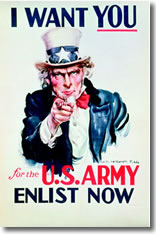
The American Approach to Poster Art
Contrary to what happened in Europe since its early beginnings, poster art in the United States never focused on the elements of pure design but rather, has always been based on anecdotal illustration. Indeed, the typical American posters portray a fabulous illustration crowded out by a lot of lettering. While European poster artists traditionally stood out for their creativity, originality and style, American poster designers are known for their technique, fidelity of reproduction, and speed. Yet, that does not imply that the American posters deserve less credit than its European counterpart. They just convey the communication, social, and artistic needs of two rather different societies. Following its remarkable success in Paris, the posters spread to the United States as to the rest of the world. The passion for poster collecting crossed the Atlantic in the late 19th century and by 1896 there were an estimated 6000 American collectors.
Since it had become fashionable to collect advertising posters, the attention given to this new form of art was so big that peripheral industries began to develop. As an example, print dealers started issuing posters catalogues, and trade magazines began to use more and more illustrations in each new edition. Despite the extraordinary influence of the American posters on behalf of the war effort, when World War I was over, the enthusiasm for poster collecting significantly diminished. Those who continued collecting posters primarily treasured them as souvenirs from an era that had ended. In the subsequent decades, the evocative and inspirational images on the posters were mainly used by interior decorators and bistro owners to set the mood in their restaurants and cafes. By that time, the few existing American poster dealers did not operate in an organized field of business. They were mostly individuals who had fallen in love with images on trips to Europe, saw how inexpensive posters were, and realized of the potential of exporting them to America for resale. In the early 1970s, a new poster market developed in America driven mainly by the its growing availability and relatively low prices. The advertising industry, as a case in point, saw a great deal of opportunity in these two characteristics.
In the United States, where advertising is one of the most powerful industry sectors, the posters have long been used by advertisers to drive product sales. As a result, more often than not, the efficacy of a posters design is measured by its selling record. Sales seem to be the goal under most advertising posters created today, as agencies have excelled in showing that an attractive advertising posters bring tangible results that translate into thousands of dollars in sales. Placed on buildings, bus and railway stations, fences, buses, taxis, and anywhere available for the public to see, posters advertise products, services, events, travel, and a myriad of other things. But sales is not the only motive underneath American poster design. Although largely used to boost sales, the posters in the United States have received a growing interest from the American public, as many recognized poster designers such as Bernhard, Binder, Carlu and Kauffer have set up their studios in New York and other large American cities. Their distinguished work and profound influence on the art has since proved a strong force towards changing the concept of American design, setting it on a much higher level than before.
Another factor that influenced this change was the appearance of poster exhibitions in several of America’s largest cities. Given that the posters address the concerns, events, social and cultural aspects of American life, the American public came to understand that poster exhibitions are of interest not only to artists or collectors of posters but that they have an ample cultural appeal to the average individual as well. The nation’s leading vintage poster shows are now held in cities like New York, Chicago, Los Angeles, and San Francisco. Also, important museums such as the National Museum of American Art Washington in Washington D.C., the Norton Museum of Art in West Palm Beach, Florida, the Oakland Museum of California, and the Santa Barbara Museum of Art in California frequently organize poster exhibitions where the magnificent works of sommoste of America’s famous artists can be enjoyed by the public. American posters expose the rich and unique diversity of American art, from the humorous circus and other show posters and sophisticated pictures in the 1890s created to attract magazine buyers, to the psychedelic posters of the 1960s and protest displays of the 1970s, to the innovative designs in the 1990s.
Many of the best-known American poster art and graphic design artists include Art Chantry, Ivan Chermayeff, Ben Shahn, Robert Rauschenberg, Will Bradley, Rockwell Kent, John Sloan, Larry Rivers, John Henry Twachtman, Seymour Chwast, Maxfield Parrish, Rupert Garcia, Dorothea Lange, Wes Wilson, Norman Rockwell, Roy Lichtenstein, Georgia O’Keeffe, including Milton Glaser among others. Over the last 15 years, one of the biggest growth areas that the American market has experienced has been American posters produced between the two World Wars. World War I posters such as James Montgomery Flagg’s iconic ‘I Want You’ usually bring over $10,000 at auction, while Joseph Binder’s famous poster of the Trylon and Perisphere for the 1939 New York World’s Fair averages $4,000, and Norman Rockwell’s patriotic World War II quartet ‘The Four Freedoms’ brings over $3,000.
Why Americans love posters
Today, there are posters available for every need and the art is accessible to all. That’s probably one of the best things about the posters. Mass printing made it possible to produce large quantities of posters at relatively low costs, making posters available even to consumers with a very tight budget. The posters brought color, inspiration, and joy inexpensively into people’s homes and work places. The major appeal of the posters has always been their size, bright colors, and catchy images. However, another reason why many Americans like, purchase, and collect posters is because all of the country’s typical pastimes and key concerns, from sporting events and movie-releases to wars and elections, are represented in this ever-evolving medium through splendid images conceived to draw attention and provoke strong reactions. Movie posters are another huge attraction for the American consumer. Through time, movies have deeply influenced fashion, the choice of music, and the social and cultural behaviour patterns.
Currently, all the latest movie posters are readily available for sale even before the new movie is released. This is especially true for big, highly-advertised blockbuster movies, whose fans line up in front of the movie theater even days before the day the movie opens! Who hasn’t seen a Matrix, Lord of the Rings, Kill Bill, Batman, Spider-man, Bridget Jones’ Diary, or Star Trek posters recently? In fact, there are many websites that specialize in this. By filling the needs of the ever-growing market of poster and movie fans, they sell several thousands of movie posters each month. A world-class art form, since Cheret printed the first color poster in 1867, posters are here to stay and you don’t have to be sophisticated or wealthy to enjoy them. While their role has diminished in importance after the 1900s, the posters will continue to evolve and transform to meet the changing needs of society, as they has done over the past century.
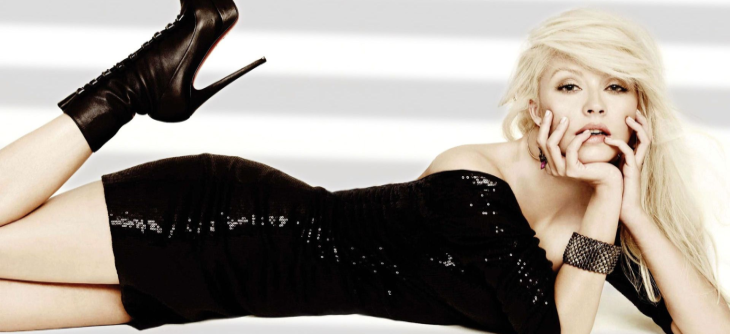
Hi, this is a comment.
To delete a comment, just log in and view the post's comments. There you will have the option to edit or delete them.